Samode Palace
After only three nights, we were not quite ready to leave Jaipur, but our planned itinerary dictated our steps. We elected to take a leisurely pace on our journey north of Jaipur towards Mandawa, and stopped at the famous Samode Palace.
While only having the opportunity (and money!) to take a tour and have a spot of lunch, it was clear that this luxurious palace would be a perfect retreat for a long weekend…or even a week. The first few days would be spent just getting in some serious R&R – pampering to the max!
To visit this grand 475 year old palace and take a tour, you pay 500 rps per person, which is then deducted from your dining bill if you stay for a meal. We were shown around the palace by a friendly man of noble bearing named Mr Singh. He has been working at Samode Palace for 30 years and was very proud of his length of employment in such a prestigious hotel. He knew all of its history and delighted in sharing that with us.
It was fascinating to see the intricately painted walls and ceilings untouched by restoration, so vivid and evocative, even though they were slightly faded through age. No wonder this is a popular wedding and events venue. The location and setting of this graceful dame adds to the atmosphere of privilege and romance; nestled up against cliffs on three sides of the palace, very well protected from invasions in the past, but now just enjoying the embrace of the nature around it.
To adhere to purdah (women out of the sight of men), there are many balconies with latticed windows where the women could watch the assemblies below in the audience rooms where the Maharaja was receiving guests. He was then able to consult with his brilliant wives on their opinions of proceedings – he had many eyes and ears on what was going on.
We had a light lunch in the dining room, the cut fresias in the foyer drifted in to add to our experience, which was a solitary one – we were far too early for other guests. While our choice of wine was pleasant, the side order of broccoli with chilli and almonds arrived minus the chilli and almonds. Had to ask for chilli to add some flavour to the steamed greens, but by the time it was served, I had forgotten that it was actually supposed to come with the almonds as well! No matter.
Our journey needed to continue, so we left the luxury of the Samode Palace to head to Mandawa and our quaint little painted haveli.
Arrival in Mandawa
Mandawa is one of the many towns in the Northern Rajasthan region of Shekhawati renowned for its once glorious, lavishly painted havelis. This was part of the silk road caravan trade route that connected Delhi and Sind (now Pakistan) with the Gujarati coast, and the wealthy merchants of the time competed in their displays of grandeur with the exquisite and elaborate murals decorating all surfaces in their mansions. It was lovely to see tourism bringing money into the area to assist in the restoration of these once aristocratic, now dilapidated, old buildings.
Some havelis, like our accommodation at Hotel Radhika, have been fully repainted in delicate detail. There is some controversy, however, between those who believe the havelis should be preserved rather than restored, and those wanting to refurbish and return them to their former glory.
The staff of Hotel Radhika are so very eager to assist in any way possible, and are on hand for whatever their guests need. Fancy an afternoon beer in the charming ground floor sitting area? Done. Wifi not behaving? They will try and sort it. When we couldn’t get the hot water to work in our room, they were up there in a flash (the taps were simply labelled incorrectly!). All of this assistance is pretty much done with only a smattering of English on their part (for some), and no Hindi on ours.
This particular haveli is beautifully restored and so atmospheric to stay in, as if we had been transported back to the times of the silk road, living the life of the rich merchants. The central communal lounge area is full of vibrant colour on walls, furnishings, and statues, and is the perfect spot to relax of an afternoon.
Unfortunately, dinner at the haveli was disappointing. We asked for our meal to be spicy, but they must have confused spice with salt, and what was delivered was far too salty for enjoyment, and there was no ‘hotness’ at all. The Palak Paneer was very chewy (like badly cooked haloumi) and the mixed vegetables dish was just a salty gravy. We wished we had ventured out to a popular place called Monica’s, just a block away from our accommodation.
Breakfast, included in the price, was simple, and attempted to cater to both the local and western tourists. It consisted of a plate of whole fruit, followed by cornflakes, milk, juice, cut up paw paw, pomegranate seeds (lovely and sweet), white bread toast, coffee, and one of our Indian favourites – paranthas (potato filled leavened flat bread).
They do have a credit card machine here (one of the few places in town that has one), which was a bonus in these cash strapped times. On check out, we were presented with beaming smiles, many ‘thank you’s’ and the gifts of traditional and locally made puppets. A delightful, sweet final demonstration of good Rajasthani hospitality.
Tour of neighbouring haveli towns
Our driver, Anand, arranged a guide, whose name was Ismail, for us to visit a couple of haveli towns nearby. We began in Dundlod. We ambled about looking at temples, received blessings from colourfully dressed holy men, walked the dusty streets, and took lots of photographs.
Moving on to Nawalgarh, we focused on the outskirts of the towns, only seeing a few havelis and cenotaphs. While what we saw was interesting, it was only after we returned to our own haveli in Mandawa that we discovered that Nawalgarh was apparently filled with interesting things to see – fully restored havelis, a haveli museum, fancy hotel. But our guide didn’t show us any of that. The next day we asked our driver why Ismail didn’t take us into the centre of the town, and there was a very simple answer: Ismail is Muslim, and the ‘mayor’ of the town refuses to have non-Hindu guides taking tourists around. Not at all nice, but now we understood the ‘omissions’ of the day.
Tour of Mandawa
Late morning we were back in Mandawa, where Ismail showed us a few different havelis, all in various states of restoration. Some buildings looked very forlorn, with piles of rubble in the centre of the courtyard and faded, scratchy murals peaking out at us from beneath layers of pink dust. They have quite a way to go before being fully restored to their early glory, so the more tourists who visit this less popular area of Rajasthan, the better.
The next stop on Ismail’s planned itinerary was a visit to his shop. Quel surprise – it is the way of things in India, where everyone is trying to make a living in a number of roles in the community. He really pushed, trying to sell us a whole bunch of textiles that we didn’t need or want, but we settled on a so-soft camel hair throw blanket. He then told us that he didn’t have credit card facilities, after we had already made it clear we had no cash. When we said, oh well, we can’t buy it, he thought of a solution pretty damned quickly. He then thought it was an appropriate choice to take us to the restaurant across the road from his shop in a fancy haveli that also didn’t have CC (which we didn’t find out about until the end of the meal – thanks a bunch). The food at Jiman was overpriced for what it was. The staff were pushy, hovering throughout the meal and trying to get us to return for dinner, which certainly was not going to happen as we had used the last of our cash in the first meal. The fact that they charged the same prices as a 5-star resort like Samode Palace was ridiculous.
In our quest for a credit card machine, Ismail ended up taking us back to our haveli and tried to process our purchase through the hotel’s EFTPOS machine. However, the machine was brand new and had run out of paper and they had not yet learned how to replace the roll. While trying to sort this, Ismail kept asking, “But don’t you have cash?” He clearly thought we were just holding out on him all the other times he had asked the same question, but I once more explained to him the limits placed on tourists and the amount of money we were allowed to exchange in one week during the nation’s cash shortage.
Our lovely, helpful hosts at the haveli found another shop owner nearby who knew how to change the paper roll in the machine, and we were sorted. The purchase was processed and we were the new owners of an authentic camel hair throw. While it was something of an effort, I am sure it will come in handy in winter at home while watching ‘telly’.
Our final night in Mandawa was a lively one. There were five or six weddings happening in town, and the music and revelry lasted for quite some time. Miraculously, I slept through it, waking at 2am to the surprising and absolute silence in the streets. I drifted back to sleep in our authentic little 19th century haveli, and not even the 5:15am call to prayer was able to rouse me.
Our Indian journey continues with Bikaner…
Accommodation: Hotel Radhika Haveli, Mandawa
Tour Company: Intense India Tours
Click on any image below to view as gallery
- Catching a ride, Mandawa, Rajasthan
- Courtyard fountain at Jiman Haveli Hotel, Mandawa, Rajasthan
- Street view, Mandawa, Rajasthan
- Nic’s hennaed hand, Mandawa, Rajasthan
- Nic having her hand hennaed, Mandawa, Rajasthan
- Happy family, Mandawa, Rajasthan
- Exterior haveli murals, Mandawa, Rajasthan
- Elephant murals in Mandawa, Rajasthan
- View of Mandawa Fort from rooftop, Hotel Radhika Haveli, Rajasthan
- Haveli ceiling, Mandawa, Rajasthan
- Upstairs, haveli undergoing restoration, Mandawa, Rajasthan
- Haveli under restoration, Mandawa, Rajasthan
- Woman waiting in the shade, Nawalgarh, Rajasthan
- Decorated tuk tuk in Nawalgarh, Rajasthan
- Dusty street in Nawalgarh, Rajasthan
- Old cenotaph, Nawalgarh, Rajasthan
- Four on a bike, Nawalgarh, Rajasthan
- Donkey and dray in Nawalgarh, Rajasthan
- Temple in Nawalgarh, Rajasthan
- Freshly roasted nuts in Nawalgarh, Rajasthan
- Dyer at work in Nawalgarh, Rajasthan
- Small business in Nawalgarh, Rajasthan
- Haveli and bike in Nawalgarh, Rajasthan
- Fancy some fresh vegetables in Nawalgarh, Rajasthan
- Market in Nawalgarh, Rajasthan
- Detail of Dundlod haveli, Rajasthan
- Cows and havelis in Dundlod, Rajasthan
- The village of Dundlod, Rajasthan
- Full moon from the rooftop of Hotel Radhika Haveli, Mandawa, Rajasthan
- View of the rooftops from Hotel Radhika Haveli, Mandawa, Rajasthan
- Traditional dolls at Hotel Radhika Haveli, Mandawa, Rajasthan
- Ornaments at Hotel Radhika Haveli, Mandawa, Rajasthan
- Centrepiece in the ground floor lounge area of Hotel Radhika Haveli, Mandawa, Rajasthan
- Exterior of Hotel Radhika Haveli, Mandawa, Rajasthan
- Our bathroom at Hotel Radhika Haveli, Mandawa, Rajasthan
- Our room at Hotel Radhika Haveli, Mandawa, Rajasthan
- First floor of the Hotel Radhika Haveli, Mandawa, Rajasthan
- Holy man studying
- Ceiling of the temple on the way to Mandawa, Rajasthan
- Temple on the journey to Mandawa, Rajasthan
- General store, Samode, Rajasthan
- Pink shop in Samode, Rajasthan
- Food stall, Samode, Rajasthan
- Walking towards the village of Samode, Rajasthan
- Exterior of Samode Palace, Rajasthan
- Al fresco dining at Samode Palace, Rajasthan
- Dining room in Samode Palace, Rajasthan
- Suite bathroom in Samode Palace, Rajasthan
- Detail of mural in Samode Palace, Rajasthan
- Maharaja’s sitting room in Samode Palace, Rajasthan
- Old reception room at Samode Palace, Rajasthan
- Ornate ceiling in Samode Palace, Rajasthan
- The pool at Samode Palace, Rajasthan
- Colourful, glittering spaces in Samode Palace, Rajasthan
- Golden arches in Samode Palace, Rajasthan
- Ballroom at Samode Palace, Rajasthan
- Milkman delivery in Rajasthan
- Morning people in Rajasthan
- Camel driver in Rajasthan
- Workers on a break, Rajasthan, India

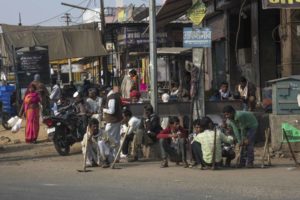

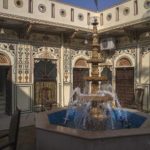
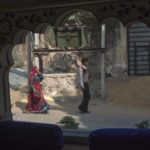
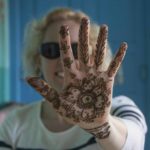
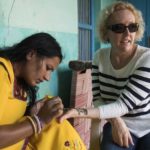

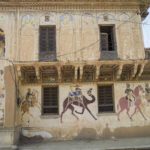
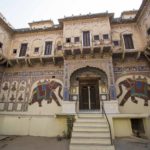
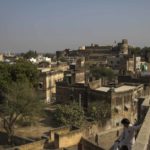
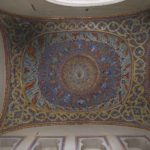
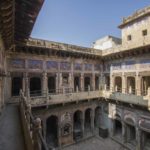
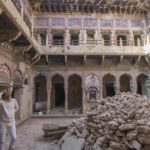
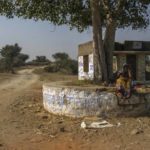
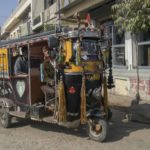
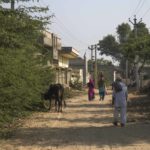
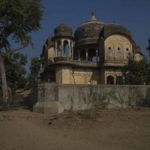
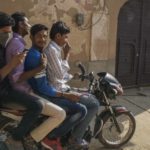
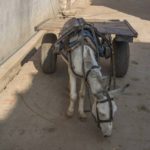
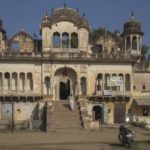
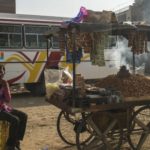
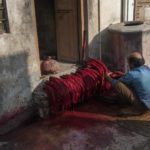
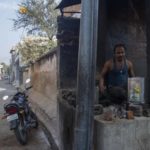
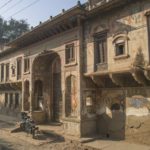
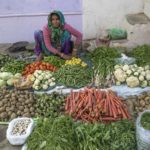
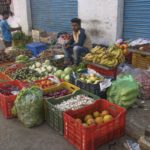
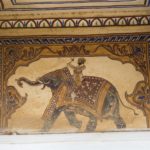
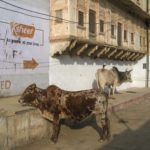
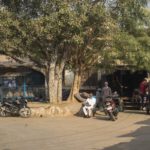

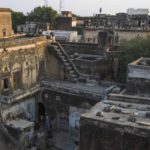
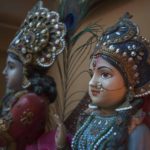
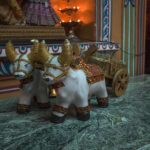
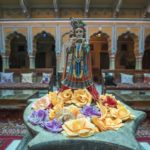
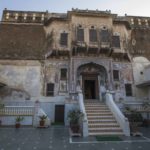
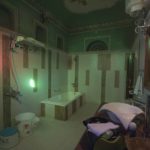
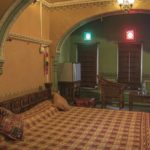
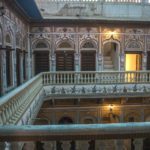
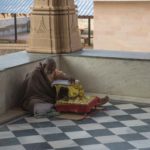
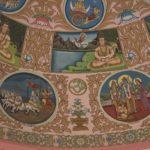
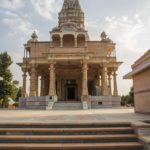
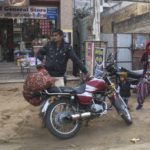
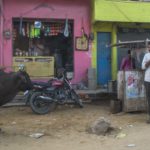
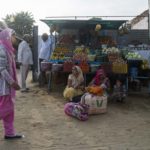
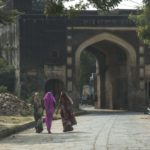
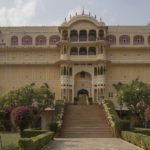
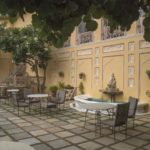
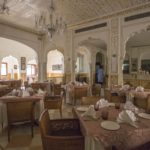
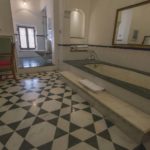

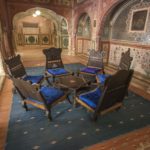
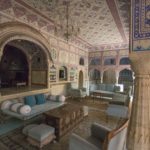
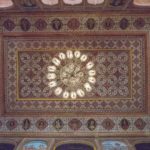
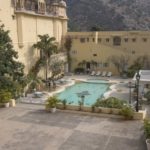
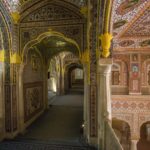
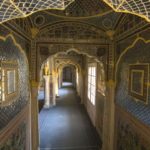
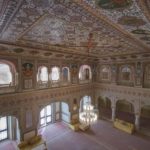
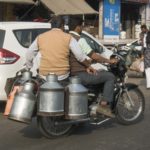

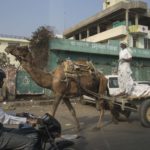
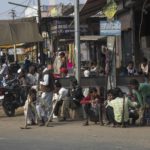
Pingback: Jaipur (Part 2) – City Palace, Albert Hall & Royal Gaitor – bontaks travels